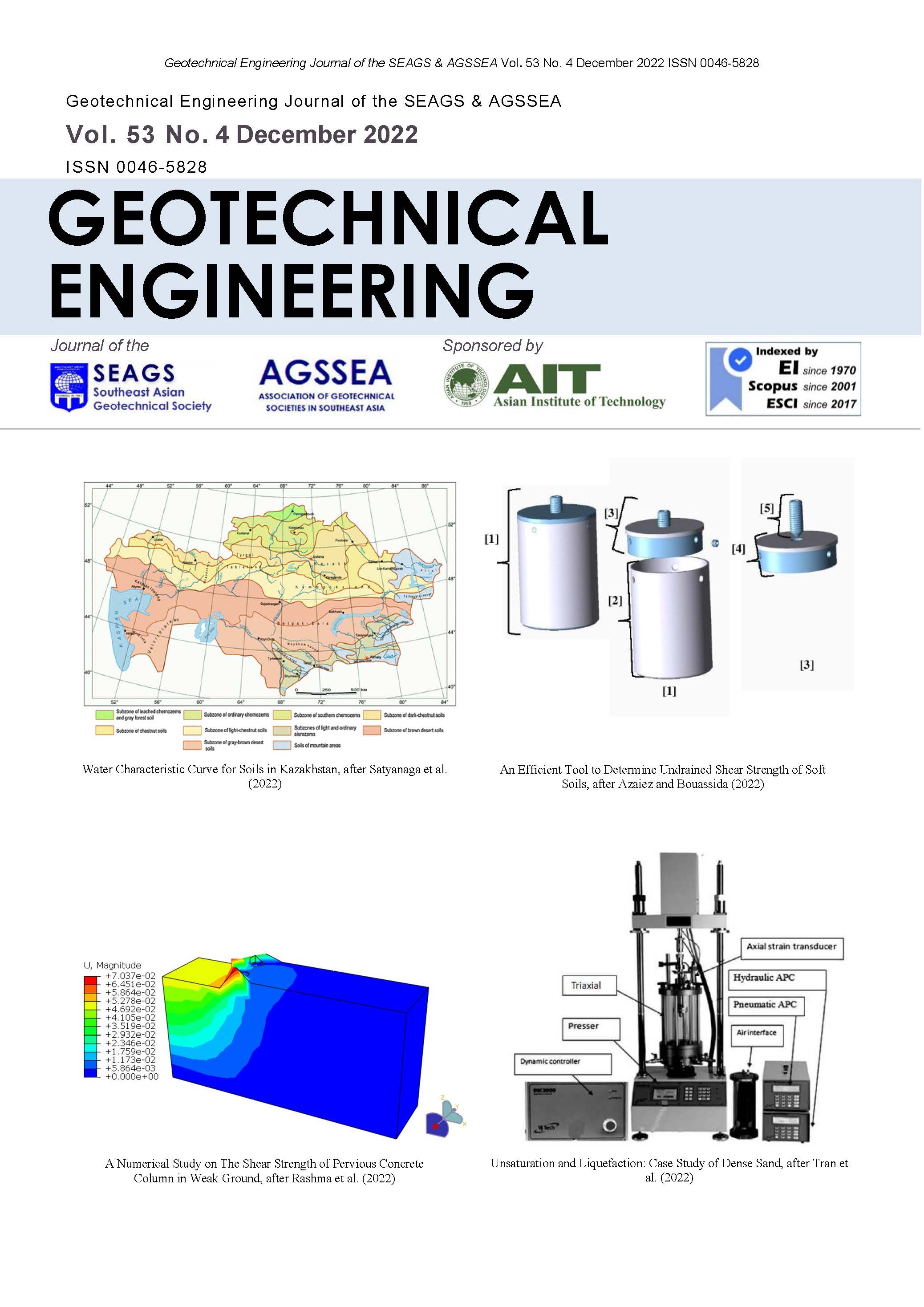Unsaturation and Liquefaction: Case Study of Dense Sand
Main Article Content
Abstract
The main objective of this paper is studying the behaviour of dense RF Hostun sand subjected to dynamic loading in the triaxial apparatus. The samples with the same initial conditions (water content, void ratio) were prepared by the wet tamping method. After that, the samples were saturated, and then an effective cell pressure of 100 kPa was used to consolidate the sample. To study the liquefaction behaviour of sand, all the samples were subjected to dynamic deviator loading until liquefaction. The experiments show that the cyclic stress ratio needed to liquefy the sample was significantly affected by the saturation degree. All saturated samples were liquefied by the same level of deviator stress; however, the cycle numbers needed to liquefy the samples are different. The results suggest that besides the void ratio and the saturation
degree, the sand liquefaction susceptibility may be affected by the different soil fabrics caused by sample preparation technique.
Article Details

This work is licensed under a Creative Commons Attribution-NonCommercial-NoDerivatives 4.0 International License.
Copyright © 2019 Association of Geotechnical Societies in Southeast Asia (AGSSEA) - Southeast Asian Geotechnical Society (SEAGS).


